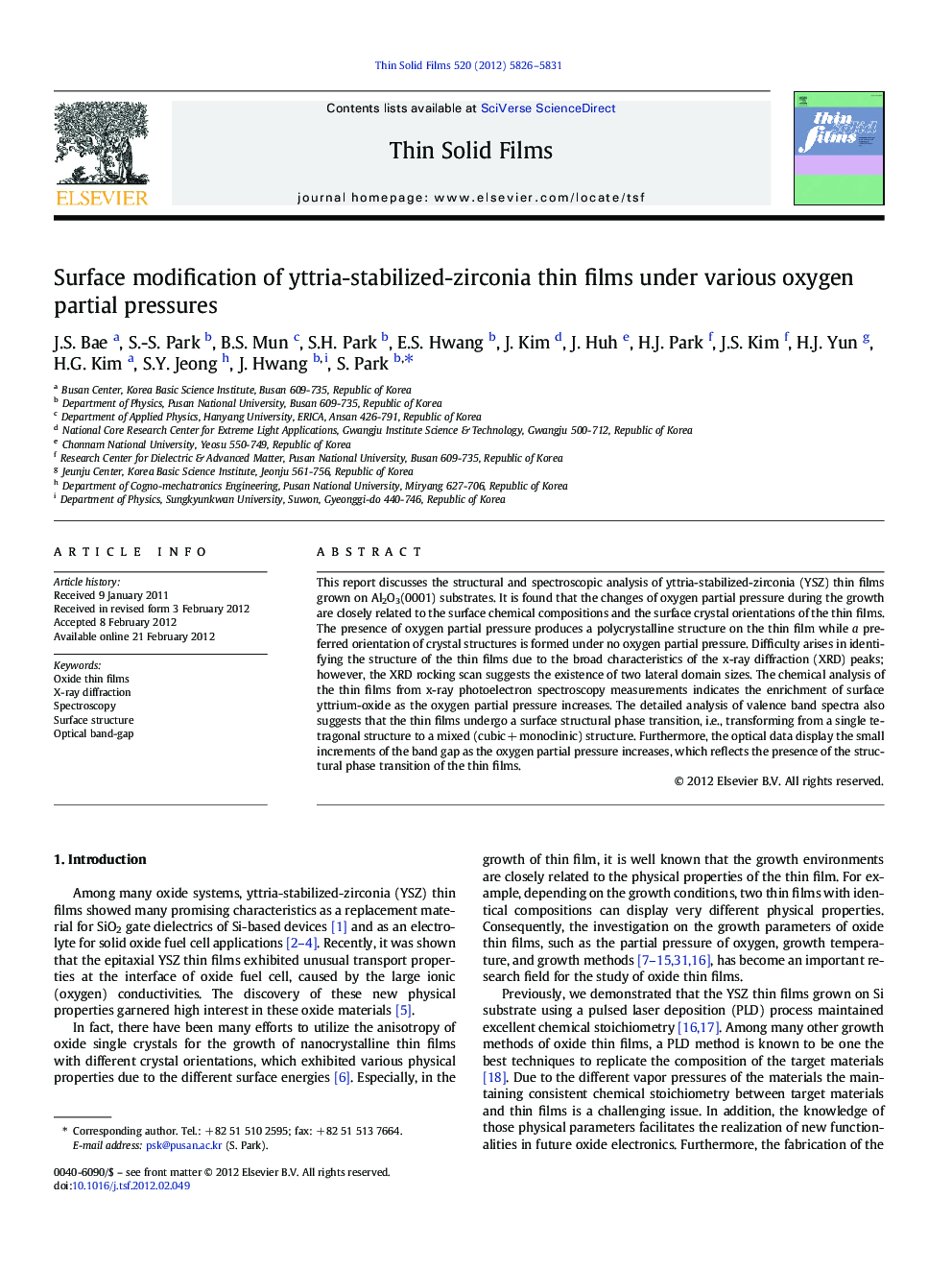| Article ID | Journal | Published Year | Pages | File Type |
|---|---|---|---|---|
| 1667449 | Thin Solid Films | 2012 | 6 Pages |
This report discusses the structural and spectroscopic analysis of yttria-stabilized-zirconia (YSZ) thin films grown on Al2O3(0001) substrates. It is found that the changes of oxygen partial pressure during the growth are closely related to the surface chemical compositions and the surface crystal orientations of the thin films. The presence of oxygen partial pressure produces a polycrystalline structure on the thin film while a preferred orientation of crystal structures is formed under no oxygen partial pressure. Difficulty arises in identifying the structure of the thin films due to the broad characteristics of the x-ray diffraction (XRD) peaks; however, the XRD rocking scan suggests the existence of two lateral domain sizes. The chemical analysis of the thin films from x-ray photoelectron spectroscopy measurements indicates the enrichment of surface yttrium-oxide as the oxygen partial pressure increases. The detailed analysis of valence band spectra also suggests that the thin films undergo a surface structural phase transition, i.e., transforming from a single tetragonal structure to a mixed (cubic + monoclinic) structure. Furthermore, the optical data display the small increments of the band gap as the oxygen partial pressure increases, which reflects the presence of the structural phase transition of the thin films.
► The rocking scan suggests the existence of two lateral domain sizes. ► The XPS indicates the enrichment of surface yttrium-oxide. ► The valence band spectra suggest that the thin films exhibit structure transforms. ► The optical data display the small increments of the band gap. ► This reflects the presence of the structural phase transition of the thin films.
